-
 Bitcoin
Bitcoin $118800
-0.34% -
 Ethereum
Ethereum $4237
-0.62% -
 XRP
XRP $3.141
-1.79% -
 Tether USDt
Tether USDt $1.000
0.00% -
 BNB
BNB $808.8
0.01% -
 Solana
Solana $175.2
-3.73% -
 USDC
USDC $0.0000
0.01% -
 Dogecoin
Dogecoin $0.2238
-4.06% -
 TRON
TRON $0.3466
2.21% -
 Cardano
Cardano $0.7761
-3.07% -
 Hyperliquid
Hyperliquid $43.18
-4.79% -
 Chainlink
Chainlink $21.07
-3.83% -
 Stellar
Stellar $0.4347
-2.12% -
 Sui
Sui $3.686
-4.85% -
 Bitcoin Cash
Bitcoin Cash $581.5
1.78% -
 Hedera
Hedera $0.2488
-4.10% -
 Ethena USDe
Ethena USDe $1.001
-0.03% -
 Avalanche
Avalanche $22.89
-3.94% -
 Litecoin
Litecoin $120.0
-2.10% -
 Toncoin
Toncoin $3.394
1.58% -
 UNUS SED LEO
UNUS SED LEO $8.976
-1.54% -
 Shiba Inu
Shiba Inu $0.00001297
-4.26% -
 Uniswap
Uniswap $11.08
0.60% -
 Polkadot
Polkadot $3.873
-4.40% -
 Cronos
Cronos $0.1682
2.02% -
 Dai
Dai $1.000
0.00% -
 Ethena
Ethena $0.8056
-2.09% -
 Bitget Token
Bitget Token $4.413
-0.95% -
 Monero
Monero $264.4
-0.70% -
 Pepe
Pepe $0.00001122
-7.04%
How does a blockchain achieve consensus?
Blockchain consensus ensures all nodes agree on transaction validity and ledger state, enabling trustless, secure decentralized networks.
Aug 12, 2025 at 05:07 am
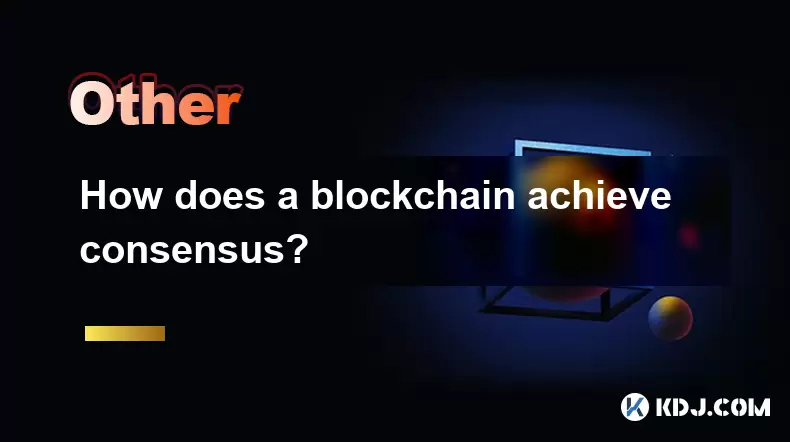
What Is Blockchain Consensus?
Blockchain consensus refers to the mechanism by which all nodes in a decentralized network agree on the validity of transactions and the current state of the ledger. Without a central authority, achieving agreement across distributed systems is critical to maintaining integrity and preventing fraud. Consensus ensures that every participant records the same data in the same order, even if some nodes attempt to manipulate or falsify information. This process is foundational to the trustless nature of blockchain technology, allowing users to transact securely without relying on intermediaries.
Proof of Work (PoW): The Original Consensus Mechanism
Proof of Work (PoW) was introduced by Bitcoin and remains one of the most widely recognized consensus algorithms. In PoW, miners compete to solve a complex cryptographic puzzle using computational power. The first miner to solve the puzzle broadcasts the solution to the network for verification. Once verified, the new block is added to the blockchain, and the miner receives a reward.
- Miners collect unconfirmed transactions into a candidate block
- They calculate the hash of the block header repeatedly, adjusting a nonce value until the hash meets the network’s difficulty target
- The winning miner propagates the block across the network
- Other nodes independently verify the block’s validity before appending it to their copy of the chain
This process makes tampering extremely costly, as an attacker would need to control over 50% of the network’s total computational power to rewrite history.Proof of Stake (PoS): Energy-Efficient Alternative
Proof of Stake (PoS) replaces computational work with economic stake as the basis for validating blocks. Instead of miners, PoS systems use validators who lock up a certain amount of cryptocurrency as collateral. The protocol selects validators to propose and attest to new blocks based on their stake and other factors like staking duration or randomization. - A validator locks tokens into a staking contract
- The network algorithm selects a validator to create the next block
- Other validators verify the block and sign off on its correctness
- If a validator acts dishonestly, their stake can be partially or fully slashed
This design drastically reduces energy consumption compared to PoW and aligns validator incentives with network security, as malicious behavior risks financial loss.Delegated Proof of Stake (DPoS) and Voting Mechanisms
Delegated Proof of Stake (DPoS) introduces a voting-based governance model where token holders elect a limited number of delegates or witnesses to validate transactions on their behalf. These elected nodes are responsible for producing blocks in a rotating schedule. - Token holders vote for delegates using their staked tokens
- The top candidates (e.g., 21 in EOS) become block producers
- Producers take turns creating and signing blocks at scheduled intervals
- If a producer fails to produce a block, they are voted out and replaced
This system enables faster transaction processing and higher throughput but increases centralization risk due to reliance on a small group of validators.Practical Byzantine Fault Tolerance (PBFT) and Other Variants
Practical Byzantine Fault Tolerance (PBFT) is used in permissioned blockchains and some hybrid models. It ensures consensus even when some nodes behave maliciously or fail. PBFT operates through a series of message exchanges between nodes to agree on a single state. - One node acts as the leader (primary), while others are replicas
- The client sends a request to the primary, which broadcasts it to all replicas
- Nodes exchange messages in rounds: pre-prepare, prepare, and commit
- When a node receives enough matching messages (2f+1, where f is the maximum number of faulty nodes), it commits the result
PBFT achieves finality quickly and is effective in networks with known participants, though scalability is limited due to the high volume of inter-node communication.Other Consensus Models and Hybrid Approaches
Beyond the primary models, several alternative and hybrid consensus mechanisms exist. Proof of Authority (PoA) relies on pre-approved, identity-verified validators, making it suitable for private or consortium blockchains. Proof of History (PoH), used by Solana, timestamps transactions using a verifiable delay function to create a historical record, improving throughput. Proof of Space (PoSpace) and Proof of Capacity (PoC) allow participants to use available disk space as a resource to participate in consensus. Some platforms combine mechanisms—for example, Ethereum uses PoS for block validation but incorporates randomness and slashing conditions to enhance security. Each model balances trade-offs between decentralization, security, and scalability.How Nodes Enforce Consensus Rules
Every node in a blockchain network runs the same consensus rules embedded in the protocol software. When a new block arrives, nodes perform a series of checks before accepting it. - Verify cryptographic signatures of all transactions in the block
- Ensure no double-spending has occurred by checking against the existing ledger
- Confirm the block hash meets the current difficulty target (in PoW) or that the validator was properly selected (in PoS)
- Validate the previous block reference to maintain chain continuity
If any check fails, the node rejects the block and does not propagate it. This autonomous validation ensures that only compliant blocks are accepted, reinforcing network-wide agreement.Frequently Asked Questions
What prevents a node from lying about a block’s validity?
Nodes independently verify every block using the same consensus rules. If a node attempts to propagate an invalid block, other nodes will reject it. Since invalid blocks are not accepted, the dishonest node gains no benefit and may be blacklisted.Can consensus be achieved if some nodes are offline?
Yes. Most consensus mechanisms are designed to tolerate a certain number of inactive or faulty nodes. For example, PoS and PBFT can function as long as more than two-thirds of the active nodes are honest and connected.How is the longest chain determined in Proof of Work?
The longest chain is the one with the most accumulated proof of work, not necessarily the one with the most blocks. Nodes always extend the chain that represents the greatest total computational effort, ensuring alignment across the network.Do all blockchains use the same consensus rules?
No. Different blockchains implement different consensus mechanisms based on their goals. Bitcoin uses PoW, Ethereum uses PoS, Ripple uses a consensus protocol based on trusted validators, and IOTA uses a directed acyclic graph (DAG) with a coordinator-based consensus.
Disclaimer:info@kdj.com
The information provided is not trading advice. kdj.com does not assume any responsibility for any investments made based on the information provided in this article. Cryptocurrencies are highly volatile and it is highly recommended that you invest with caution after thorough research!
If you believe that the content used on this website infringes your copyright, please contact us immediately (info@kdj.com) and we will delete it promptly.
- BlockDAG, Chainlink, Hedera: The Cryptos Enterprises are Eyeing
- 2025-08-12 09:30:12
- Dogecoin's Wild Ride: Big Holders, Price Push, and What's Next for the Meme Coin
- 2025-08-12 08:30:12
- Coin Master Board Adventure: Free Energy and the Thrill of the Board
- 2025-08-12 08:50:12
- Bitcoin to $133,000? Here's What the Experts Are Saying
- 2025-08-12 08:30:12
- LYNO AI Presale: Early Bird Opportunity Before Token Price Hike
- 2025-08-12 08:50:12
- Dogecoin, Tron Update, Cold Wallet ROI: Navigating Crypto's Choppy Waters
- 2025-08-12 09:30:12
Related knowledge
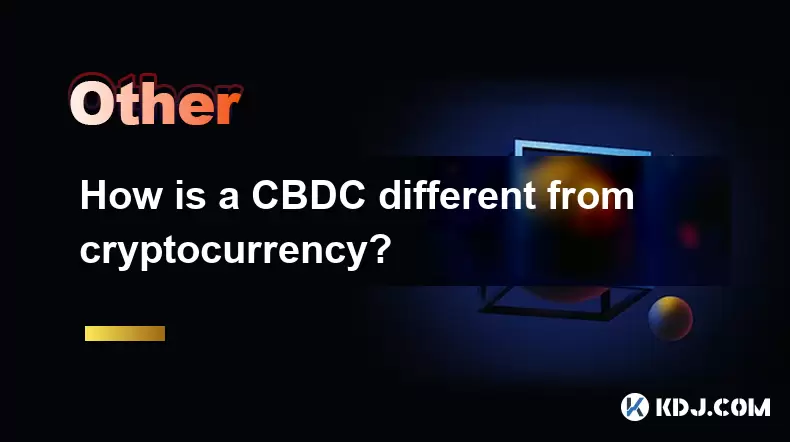
How is a CBDC different from cryptocurrency?
Aug 12,2025 at 09:21am
Understanding the Core Nature of CBDCsA Central Bank Digital Currency (CBDC) is a digital form of a country’s sovereign currency, issued and regulated...

How can zero-knowledge proofs enhance privacy on a blockchain?
Aug 12,2025 at 02:15am
Understanding Zero-Knowledge Proofs in Blockchain ContextZero-knowledge proofs (ZKPs) are cryptographic protocols that allow one party (the prover) to...
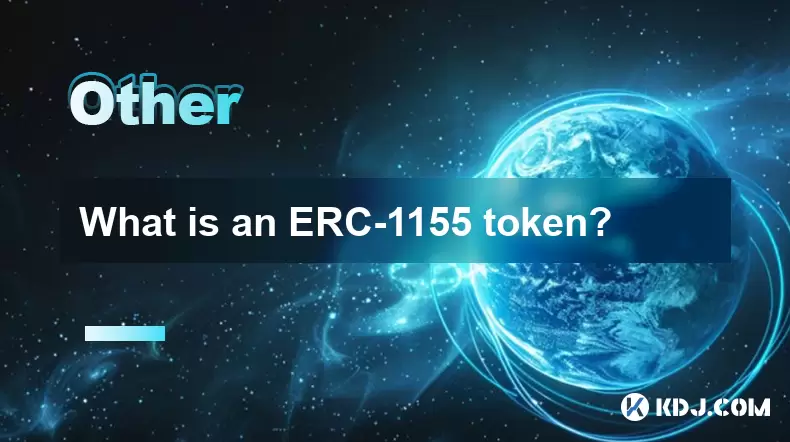
What is an ERC-1155 token?
Aug 12,2025 at 05:21am
Understanding the ERC-1155 Token StandardThe ERC-1155 token standard is a multi-token standard introduced on the Ethereum blockchain that enables the ...
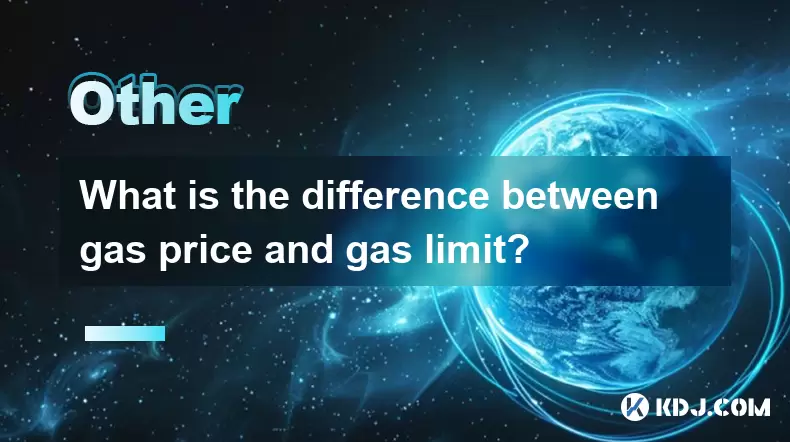
What is the difference between gas price and gas limit?
Aug 09,2025 at 08:42pm
Understanding Gas in Ethereum and EVM-Based NetworksIn blockchain networks that support smart contracts—particularly Ethereum and other EVM (Ethereum ...
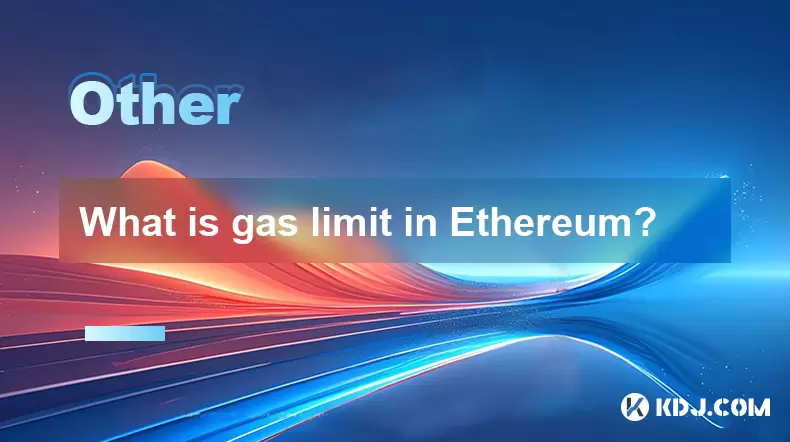
What is gas limit in Ethereum?
Aug 11,2025 at 04:29am
Understanding the Concept of Gas in EthereumIn the Ethereum network, gas is a unit that measures the computational effort required to execute operatio...
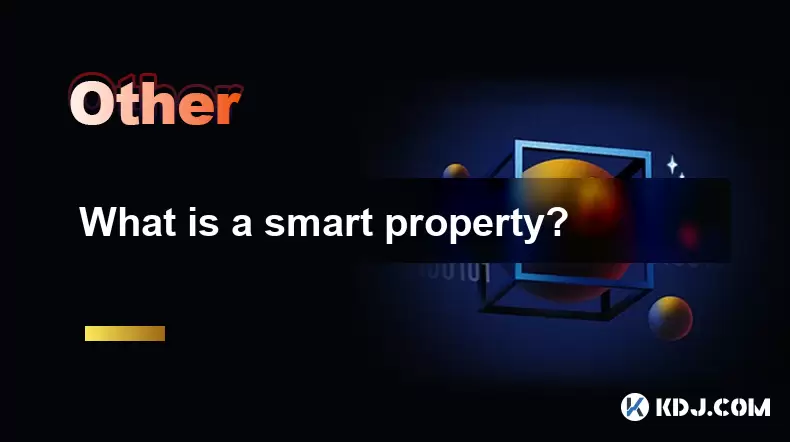
What is a smart property?
Aug 12,2025 at 05:14am
Understanding Smart Property in the Cryptocurrency EcosystemSmart property refers to physical or digital assets whose ownership and transfer are manag...

How is a CBDC different from cryptocurrency?
Aug 12,2025 at 09:21am
Understanding the Core Nature of CBDCsA Central Bank Digital Currency (CBDC) is a digital form of a country’s sovereign currency, issued and regulated...

How can zero-knowledge proofs enhance privacy on a blockchain?
Aug 12,2025 at 02:15am
Understanding Zero-Knowledge Proofs in Blockchain ContextZero-knowledge proofs (ZKPs) are cryptographic protocols that allow one party (the prover) to...

What is an ERC-1155 token?
Aug 12,2025 at 05:21am
Understanding the ERC-1155 Token StandardThe ERC-1155 token standard is a multi-token standard introduced on the Ethereum blockchain that enables the ...

What is the difference between gas price and gas limit?
Aug 09,2025 at 08:42pm
Understanding Gas in Ethereum and EVM-Based NetworksIn blockchain networks that support smart contracts—particularly Ethereum and other EVM (Ethereum ...

What is gas limit in Ethereum?
Aug 11,2025 at 04:29am
Understanding the Concept of Gas in EthereumIn the Ethereum network, gas is a unit that measures the computational effort required to execute operatio...

What is a smart property?
Aug 12,2025 at 05:14am
Understanding Smart Property in the Cryptocurrency EcosystemSmart property refers to physical or digital assets whose ownership and transfer are manag...
See all articles

























































































